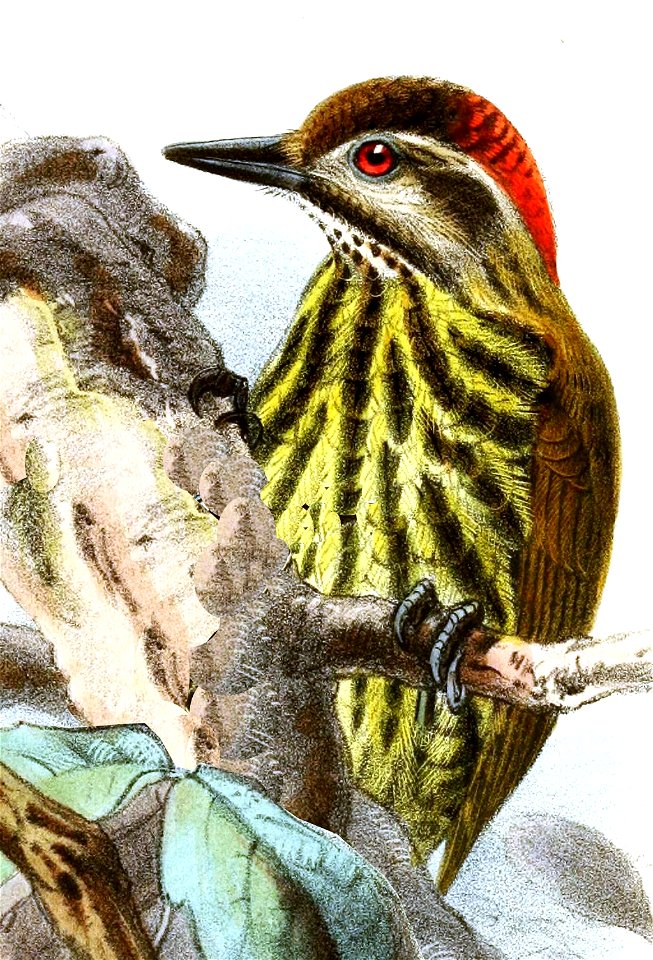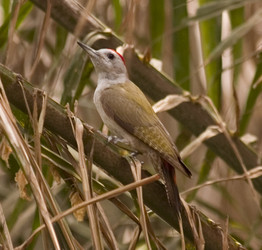The Dendropicos Reichenowi: A Closer Look At The African Woodpecker
Share
The Dendropicos reichenowi, commonly known as the Reichenow's Woodpecker, is a fascinating bird species belonging to the family Picidae within the order Piciformes. This article delves into the taxonomy, habitat, behavior, and conservation status of this unique woodpecker, providing bird enthusiasts and nature lovers with a comprehensive understanding of this remarkable species.

Taxonomy
The Reichenow's Woodpecker is classified under the following taxonomic hierarchy:
- Order: Piciformes
- Family: Picidae
- Suborder: Pici
- Subfamily: Picinae
- Species: Dendropicos lugubris
- Subspecies: reichenowi
The type specimen was first described by Sjostedt in 1893, and it is primarily found in the Bonge district, north of Cameroon Mountain. The species is closely related to other woodpeckers in the Dendropicos genus, which are known for their distinctive characteristics and behaviors.
Physical Characteristics
Reichenow's Woodpecker is a medium-sized bird, typically measuring around 20-25 cm in length. It exhibits a striking plumage that is predominantly dark green with a lighter underbelly. The male and female are similar in appearance, although males may have a slightly more pronounced crest. Their strong, chisel-like beaks are perfectly adapted for drilling into trees in search of insects and larvae.
Habitat
This woodpecker species thrives in the dense forests of Central Africa, particularly in the humid and tropical regions. The Bonge district, where it is primarily found, offers a rich habitat filled with tall trees and abundant food sources. Reichenow's Woodpecker prefers areas with a mix of mature and younger trees, as these environments provide ample opportunities for foraging and nesting.

Diet
Reichenow's Woodpecker primarily feeds on insects, particularly ants, beetles, and larvae found beneath the bark of trees. Its strong beak allows it to excavate wood effectively, making it a skilled forager. In addition to insects, this woodpecker may also consume fruits and seeds, especially during the dry season when insect availability decreases.

Behavior
This species is known for its distinctive drumming sounds, which it uses to communicate with other woodpeckers and establish territory. Reichenow's Woodpecker is generally solitary or found in pairs, and it is often seen foraging on tree trunks and branches. Its climbing abilities are impressive, allowing it to navigate the vertical surfaces of trees with ease.
Reproduction
The breeding season for Reichenow's Woodpecker typically occurs during the rainy season when food is abundant. The female lays a clutch of 2-4 eggs in a tree cavity, which both parents help to incubate. After hatching, the chicks are fed a diet rich in protein from insects, and they fledge approximately 3-4 weeks after birth.

Conservation Status
Currently, the conservation status of Reichenow's Woodpecker is not well-documented, but habitat loss due to deforestation poses a significant threat to its population. Efforts to preserve its natural habitat are crucial for ensuring the survival of this species. Birdwatchers and conservationists are encouraged to support local initiatives aimed at protecting the forests of Cameroon.
Birdwatching Tips
For those interested in observing Reichenow's Woodpecker in its natural habitat, the Bonge district in Cameroon is the ideal location. Early morning is the best time for birdwatching, as the birds are most active during this period. Listening for their distinctive drumming sounds can also help locate them. Binoculars and a field guide are essential tools for any birdwatcher hoping to spot this elusive woodpecker.
In summary, the Dendropicos reichenowi is a remarkable species that plays a vital role in its ecosystem. Its unique adaptations and behaviors make it a fascinating subject for study and observation. By understanding and protecting this woodpecker, we contribute to the preservation of biodiversity in Central Africa. The beauty and complexity of nature are encapsulated in the life of the Reichenow's Woodpecker, reminding us of the importance of conservation efforts in safeguarding our planet's wildlife.
